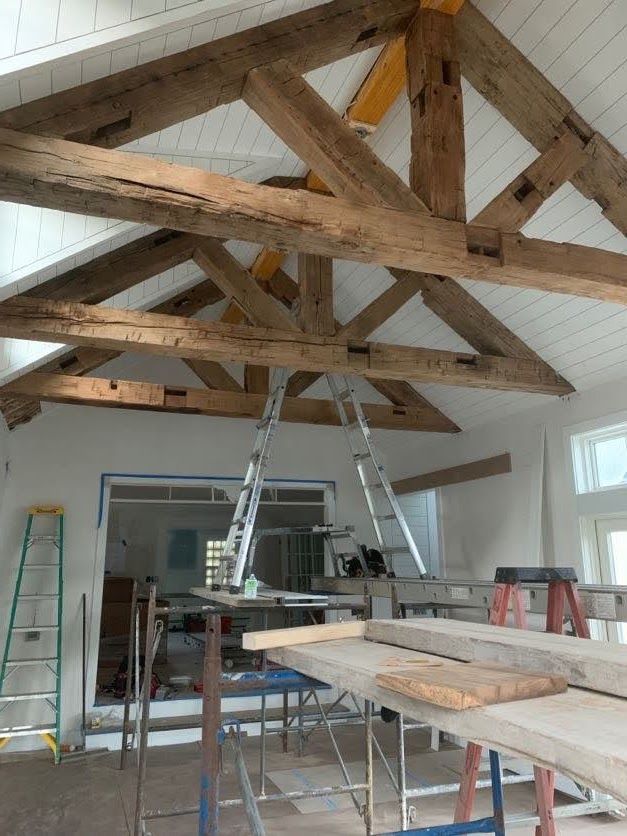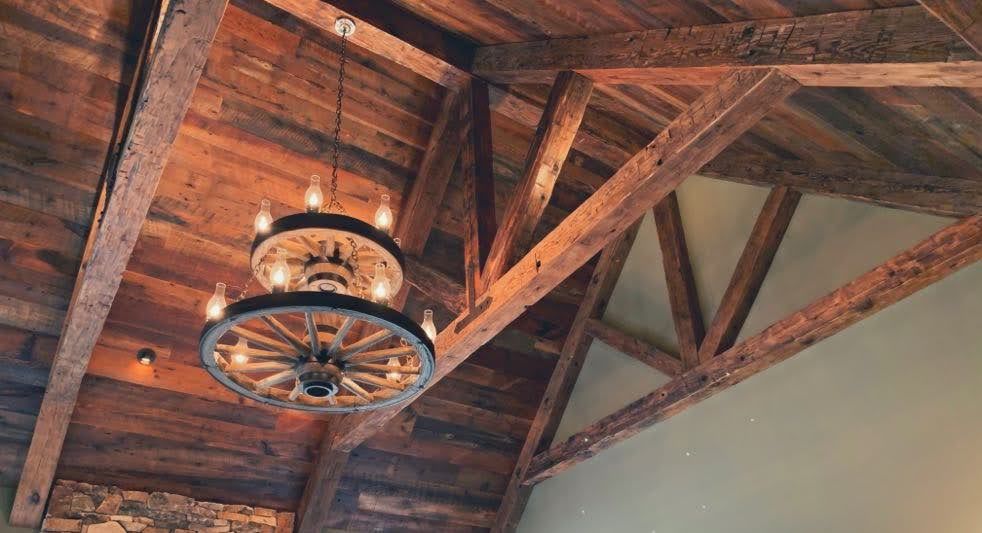Timber Trusses or Steel? The Debate Ends Here!
Compare durability, cost, and style of timber trusses vs. steel beams.

When designing your building's support system, it is important to choose between timber trusses and steel beams. The choice affects not only the strength of your structure but also its appearance, cost, and environmental impact. This guide breaks it down simply so you can confidently make the right call.
What Are Timber Trusses?
Timber trusses are wooden frameworks designed to support ceilings and roofs. They’re made by joining pieces of wood into triangular shapes, which helps spread the weight evenly. Aside from being strong, timber trusses are stunning to look at. They can turn a simple ceiling into a major design feature.
Traditional timber trusses are crafted using old-school techniques, where skilled workers connect beams with wooden joints or pegs instead of metal fasteners. Modern versions may add metal plates to the mix while keeping the warm, natural look of wood.
What About Steel Beams?
On the other hand, steel beams are metal supports that have become the go-to choice in commercial construction and some homes. They’re incredibly strong and can hold a lot of weight, even over long distances, without needing extra supports. Their sleek, industrial look fits well in modern designs but is often hidden behind other materials for a simpler finish.
Timber vs. Steel: Breaking It Down
1. Looks and Style
- Timber Trusses: Wood wins hands-down when it comes to looks. Exposed timber trusses bring warmth, character, and a natural feel. Each piece of wood has a unique grain and texture that makes a space feel special.
- Steel Beams: Steel beams have a clean, industrial vibe. But in homes, they’re often hidden behind walls or other finishes because most people want them out of sight.
2. How Strong Are They?
- Timber Trusses: Don’t underestimate wood. Well-designed timber trusses can handle big loads and stretch over spaces up to 40 feet wide! Plus, in a fire, large wooden beams actually hold up longer than unprotected steel since the outer layer chars and slows burning.
- Steel Beams: Steel is incredibly strong for its size. A smaller steel beam can do the same job as a much bigger wooden one. This can be a big advantage when space is tight or when the building design calls for very long spans.
3. Impact on the Environment
- Timber Trusses: Wood is a renewable resource. When timber is harvested responsibly, it helps lock in carbon and fight climate change. Using reclaimed wood from older structures is even better for the environment.
- Steel Beams: While steel can be recycled, making new steel takes a lot of energy and releases more carbon compared to processing wood. On average, steel production uses about 24 times more energy than timber processing.
4. Cost Comparison
- Timber Trusses: Custom timber trusses can cost more upfront, especially if they have intricate designs or use rare types of wood. But they add value to your property and can last a lifetime if cared for properly.
- Steel Beams: Steel beams are usually less expensive to buy and use for basic projects. However, they don’t add the same visual appeal as timber, which can be a drawback for design-focused homes.
5. Ease of Installation
- Timber Trusses: Installing heavy wooden trusses takes skill and sometimes special equipment, but parts of the work can be done off-site to save time.
- Steel Beams: Steel also needs heavy equipment for installation. While it can sometimes be faster to put up steel beams, they often need extra work after installation to make them look finished.

The Final Decision
The best choice comes down to your needs, style, and priorities.
- Go with timber trusses if you want natural charm, eco-friendliness, or a design element that makes a bold impact.
- Choose steel beams if you need maximum strength, space-saving options, or if the structural supports will be hidden.
A Blend of Both
Sometimes, the best answer is a combination. Many modern homes and buildings use both timber and steel, taking advantage of each material’s strengths. For instance, steel connectors can add extra strength to traditional wooden designs.
The Takeaway
Whether you pick timber, steel, or a mix of both, understanding their differences will help you create the perfect design for your space. But if you’re looking for unmatched beauty, environmental benefits, and a deep connection to history, timber trusses—especially ones made from reclaimed wood—stand out as the clear choice.
Why Choose Bay & Bent for Timber Trusses?
If you’re drawn to the beauty of timber trusses, Bay & Bent offers something truly unique. Our team transforms historic wood beams from old barns and buildings into modern timber trusses. These rescued, hand-hewn pieces carry a rich history, with natural aging and patina that you just can’t fake.
At our workshop, these timbers are restored and reconfigured into custom trusses that meet today’s building standards while keeping the character of the original wood. The result? Stunning, one-of-a-kind structures that seamlessly blend history and function.
Each truss is a work of art, thoughtfully crafted by experts who understand both modern engineering and traditional woodworking.









